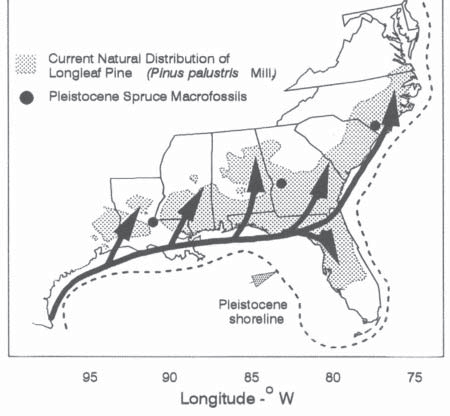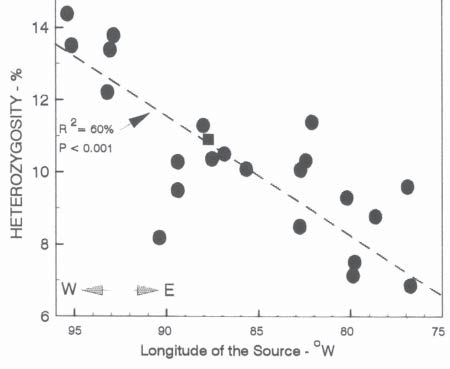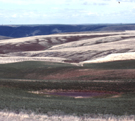Genetic variation in the southern pines: evolution, migration, and adaptation following the Pleistocene
Ronald Schmidtling. 2007. Genetic variation in the southern pines: evolution, migration, and adaptation following the Pleistocene. IN Kabrick, John M.; Dey, Daniel C.; Gwaze, David, eds. Shortleaf pine restoration and ecology in the Ozarks: proceedings of a symposium; 2006 November 7-9; Springfield, MO. Gen. Tech. Rep. NRS-P-15. Newtown Square, PA: U.S. Department of Agriculture, Forest Service, Northern Research Station: 28-32.
Full text [here]
Selected excerpts:
ABSTRACT
Climate has certainly changed over time, requiring genetic change or migration of forest tree species. Little is known about the location of the southern pines during the Pleistocene glaciation, which ended around 14,000 years ago. Macrofossils of spruce (Picea spp.) dating from the late Pleistocene, which are typical of climates much cooler than presently occupied by the southern pines, have been found within the current range of the southern pines, indicating that the climate was considerably colder at that time. From this discovery it is reasonable to assume that the southern pines were situated south of their present range during the Pleistocene and migrated to their current location after the glaciers receded. Variation in adaptive and non-adaptive traits of the southern pines suggests that loblolly pine (Pinus taeda) existed in two refugia, one in south Texas/north Mexico, and one in south Florida. Longleaf pine (P. palustris) probably existed only in the western refugium. Slash pine (P. elliottii), on the other hand, presumably resided only in the Florida refugium, whereas shortleaf pine (P. echinata) is cold-hardy enough to have existed in a continuous distribution across the Gulf Coast. Implications of climate warming on the future of southern pines are discussed.
CONCLUSIONS
In spite of the relative uniformity of the Coastal Plain of the southeastern United States, important genetic differences exist among the southern pine species in response to the last glaciation. Longleaf pine resided in a southwestern refugium and slash pine in a Florida refugium. Loblolly pine resided in both refugia, the two populations being isolated genetically. Shortleaf pine probably resided in a continuous population across the exposed continental shelf. The many advances and retreats of glaciation during the Pleistocene undoubtedly had profound effects on variation and speciation in the southern pines.

Figure 2.—Post-Pleistocene migration route accounting for the variation. Adapted from Schmidtling and Hipkins (1998).

Figure 3.—Variation in expected heterozygosity by longitude in longleaf pine. Adapted from Schmidtling and Hipkins (1998).

Figure 4.—Current natural distribution of loblolly pine showing the frequency of trees with high cortical limonene content. Also shown are the proposed Pleistocene refugia and migration routes.

Figure 5.—Proposed location of the major southern pines during the Wisconsin Glaciation.
